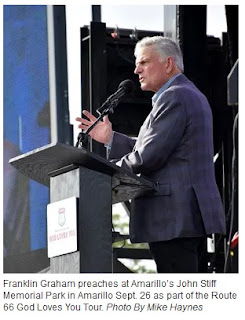Dec. 19, 2021, column in the Amarillo Globe-News:
Some thoughts about Christmas and the birth of Jesus
A couple of Christmas
observations:
REAL JESUS – I think the
nativity set’s stable that my mother put out every December for decades was
made of sturdy cardboard, and the animals, shepherds, Wise Men, Joseph, Mary
and baby Jesus were painted ceramic figures. The presentation was rustic but a
little cleaned up from what the real thing would have looked – and smelled –
like.
Since Kathy and I have been married, we’ve had a respectful but kind of cartoonish set of nativity characters displayed on a desk each year until this season, when I gave Kathy a new, shiny, more elegant holy family that we can add to gradually.
I even have some 2.25-inch
nativity figures created by a toy soldier company that are realistic except for
the lack of dirt or grime on the neatly painted metal models.
There is nothing at all wrong
with those representations of the birth of Christ, the manger scenes around the
country or the multitudes of Christmas pageants with cute boys and girls
playing angels and shepherds. Columnist Gene Shelburne pointed out last week,
however, that the sanitized version of the Christmas story creates icons –
shepherds, camels, three kings, the baby and his parents – that sometimes are
lumped into the same holiday wonderland as Santa Claus, reindeer and Frosty the
Snowman.
It’s too easy to enjoy the
cuteness and beauty and forget that the nativity story is a real occurrence
that happened 2,000 years ago in the gritty town of Bethlehem – which still
exists – in the real country of Israel – where artifacts confirming biblical history
continue to be dug up.
Movies also have tended to show
romanticized versions of Jesus’ birth. The 1977 film, “Jesus of Nazareth,” has a
good amount of dirt and a splintery manger, but what I remember about it is its
beauty.
This year’s “Christmas with The
Chosen: The Messengers,” which has done well at the box office in competition
with more mainstream movies, comes the closest I’ve seen to making Joseph and
Mary and their surroundings seem like people and places that come out of
history instead of from a pretty renaissance painting.
When the young, pregnant woman
and her husband find out they don’t have a place to stay in Bethlehem, the
actors, played by Sara Anne and Raj Bond, show genuine distress, just as a
modern couple might when discovering every hotel room in town is booked because
of the biggest college football game of the year.
Joseph’s face is sweaty and
grungy, and Mary moves gingerly as an expectant mother would. When they finally
settle on a stable for the night, Joseph complains as he scoops manure off the
dirt floor to make room for Mary’s blankets.
As the holy moment arrives, Mary
is deep-breathing and in pain as a wide-eyed Joseph wonders what to do. The
scene remains G-rated, but we hear the sounds of birth, and the baby that Joseph
presents to his wife still needs cleaning off.
The more accurate portrayal of a
human birth and the other true-to-life scenes might be more likely to influence
doubters toward the reality of the Christian faith. In fact, that’s true of the
entire “Chosen” series, which until this episode in theaters has been only on
YouTube and a streaming app.
CHRIST IN CHRISTMAS – Timothy
Larsen brings up a reverse take on the typical lament that society is taking
Christ out of Christmas. In this month’s “Christianity Today” magazine, the
Wheaton College teacher who is the editor of “The Oxford Handbook of Christmas”
says that despite the commercialism and secularism of the holiday, Christmas is
the most Christian time of the year.
In his essay, “No One Took
Christ Out of Christmas,” Larsen points out that even the U.S. government
recognizes a Christian sacred day as a federal holiday, churches typically have
their largest attendance at Christmas, and some radio stations that normally
play rock or pop music switch to Christmas songs in December. “Jeremiah was a
bullfrog” becomes “Joy to the world! The Savior reigns.”
“In our culture, Christmas is
the least secular time of the entire year,” Larsen writes.” And the Christmas
season takes up 10 percent of the year!”
If we do worry about Christ disappearing from Christmas, he says, one action we can take is to make our own celebrations more centered on Christ. At least in our own homes, we can follow the second headline on Larsen’s essay and make this season “The Most Jesusy Time of Year.”

















